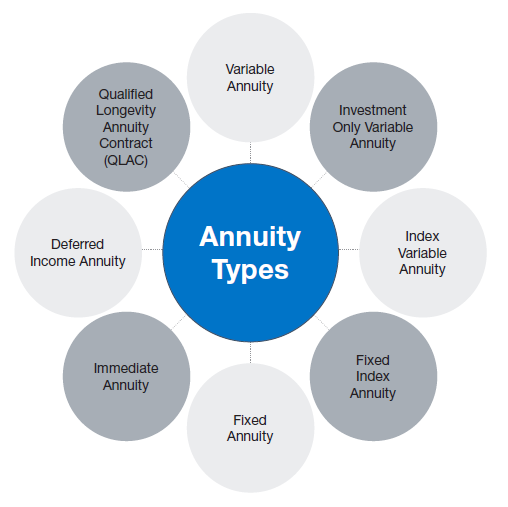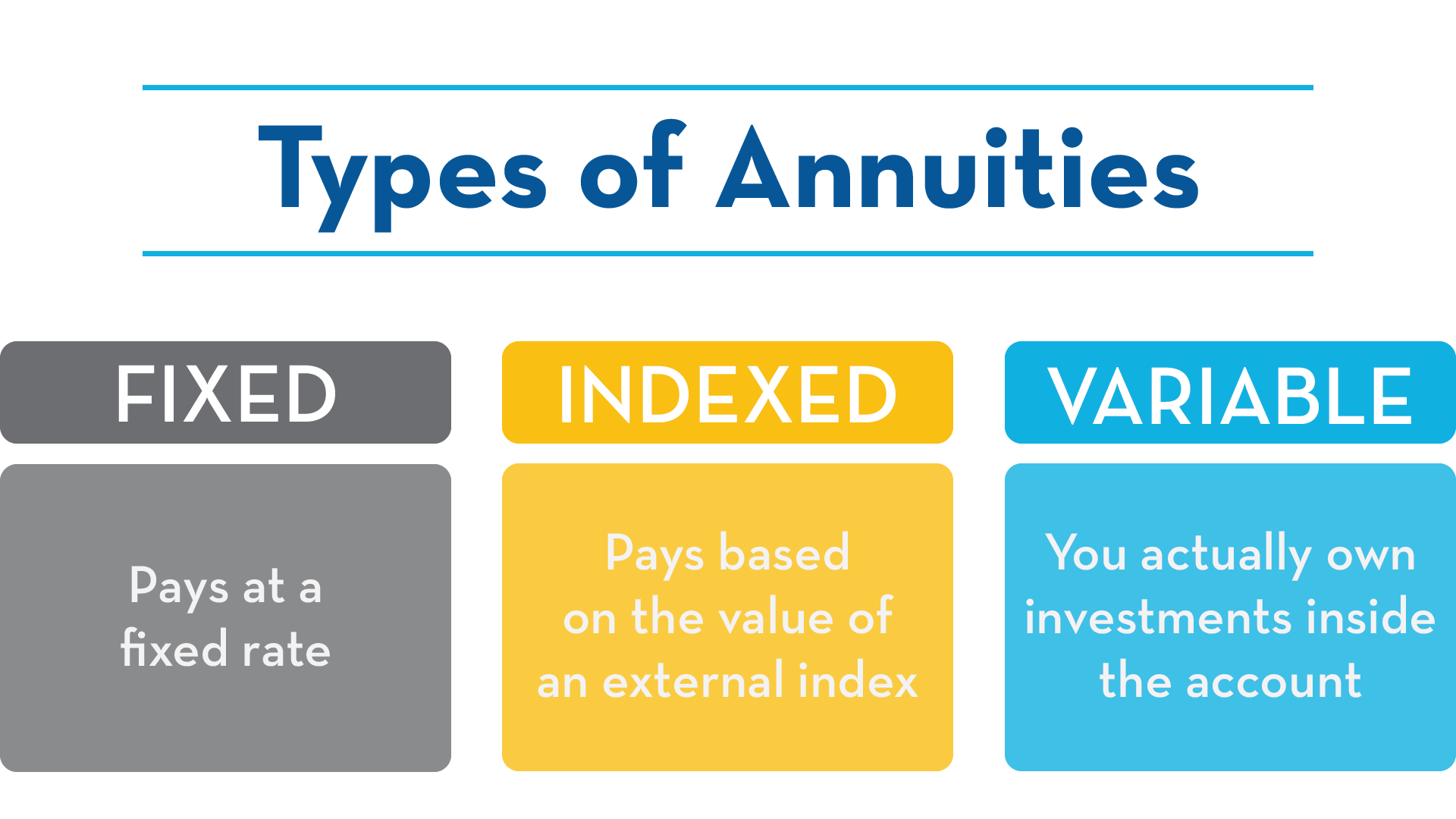All Categories
Featured
Table of Contents
The settlement could be invested for development for an extended period of timea solitary premium delayed annuityor spent for a short time, after which payout beginsa solitary costs prompt annuity. Solitary premium annuities are typically funded by rollovers or from the sale of an appreciated property. A versatile premium annuity is an annuity that is planned to be funded by a series of settlements.
Proprietors of repaired annuities understand at the time of their purchase what the value of the future money flows will certainly be that are produced by the annuity. Certainly, the variety of cash circulations can not be known ahead of time (as this depends upon the agreement owner's life expectancy), but the ensured, taken care of interest rate at the very least gives the owner some level of certainty of future earnings from the annuity.
While this difference appears straightforward and straightforward, it can substantially influence the worth that an agreement owner eventually stems from his/her annuity, and it creates considerable uncertainty for the agreement proprietor - Comparing fixed vs variable annuities. It also generally has a material effect on the degree of costs that a contract proprietor pays to the issuing insurance policy company
Fixed annuities are usually made use of by older financiers who have actually limited properties yet who intend to balance out the danger of outlasting their possessions. Fixed annuities can offer as a reliable tool for this function, though not without certain disadvantages. For instance, when it comes to instant annuities, when an agreement has been purchased, the agreement owner gives up any kind of and all control over the annuity possessions.
Analyzing Variable Annuity Vs Fixed Indexed Annuity A Comprehensive Guide to Investment Choices Breaking Down the Basics of Investment Plans Advantages and Disadvantages of Different Retirement Plans Why Fixed Vs Variable Annuity Pros And Cons Is Worth Considering Variable Annuity Vs Fixed Indexed Annuity: Simplified Key Differences Between Different Financial Strategies Understanding the Key Features of Long-Term Investments Who Should Consider Strategic Financial Planning? Tips for Choosing the Best Investment Strategy FAQs About Fixed Vs Variable Annuities Common Mistakes to Avoid When Planning Your Retirement Financial Planning Simplified: Understanding Fixed Vs Variable Annuity A Beginner’s Guide to Smart Investment Decisions A Closer Look at What Is A Variable Annuity Vs A Fixed Annuity
An agreement with a common 10-year surrender duration would bill a 10% surrender charge if the contract was given up in the very first year, a 9% abandonment fee in the 2nd year, and so on until the surrender fee gets to 0% in the agreement's 11th year. Some delayed annuity contracts contain language that permits little withdrawals to be made at numerous intervals during the abandonment period scot-free, though these allocations generally come at a price in the type of reduced guaranteed rates of interest.
Just as with a dealt with annuity, the proprietor of a variable annuity pays an insurance coverage company a swelling sum or series of payments in exchange for the assurance of a series of future settlements in return. As mentioned above, while a dealt with annuity grows at an assured, continuous rate, a variable annuity grows at a variable rate that depends upon the performance of the underlying financial investments, called sub-accounts.
Throughout the accumulation stage, properties purchased variable annuity sub-accounts expand on a tax-deferred basis and are taxed just when the agreement proprietor takes out those incomes from the account. After the buildup phase comes the earnings phase. Over time, variable annuity possessions should theoretically raise in value till the agreement proprietor decides she or he wish to begin withdrawing cash from the account.
The most substantial problem that variable annuities commonly present is high expense. Variable annuities have a number of layers of fees and costs that can, in accumulation, produce a drag of up to 3-4% of the contract's value each year.
M&E expenditure costs are computed as a percentage of the agreement value Annuity providers pass on recordkeeping and various other administrative prices to the agreement proprietor. This can be in the form of a flat yearly charge or a percentage of the agreement worth. Management costs might be consisted of as component of the M&E threat cost or might be analyzed independently.
These fees can range from 0.1% for easy funds to 1.5% or more for actively handled funds. Annuity contracts can be customized in a number of methods to serve the certain requirements of the agreement owner. Some common variable annuity riders include assured minimal build-up benefit (GMAB), guaranteed minimum withdrawal advantage (GMWB), and guaranteed minimal earnings advantage (GMIB).
Breaking Down Your Investment Choices A Comprehensive Guide to Investment Choices Defining Retirement Income Fixed Vs Variable Annuity Benefits of Choosing the Right Financial Plan Why Fixed Income Annuity Vs Variable Annuity Can Impact Your Future Variable Vs Fixed Annuities: How It Works Key Differences Between Fixed Interest Annuity Vs Variable Investment Annuity Understanding the Rewards of Long-Term Investments Who Should Consider Strategic Financial Planning? Tips for Choosing the Best Investment Strategy FAQs About Planning Your Financial Future Common Mistakes to Avoid When Choosing Variable Annuity Vs Fixed Indexed Annuity Financial Planning Simplified: Understanding Variable Annuity Vs Fixed Indexed Annuity A Beginner’s Guide to Retirement Income Fixed Vs Variable Annuity A Closer Look at Variable Annuity Vs Fixed Indexed Annuity
Variable annuity payments offer no such tax obligation deduction. Variable annuities often tend to be very ineffective automobiles for passing wealth to the future generation since they do not appreciate a cost-basis modification when the original contract owner passes away. When the proprietor of a taxed financial investment account dies, the expense bases of the investments held in the account are gotten used to show the marketplace costs of those financial investments at the time of the owner's death.
As a result, heirs can inherit a taxed financial investment portfolio with a "clean slate" from a tax obligation point of view. Such is not the case with variable annuities. Investments held within a variable annuity do not obtain a cost-basis adjustment when the initial proprietor of the annuity passes away. This indicates that any type of built up unrealized gains will be passed on to the annuity owner's beneficiaries, along with the connected tax obligation burden.

One considerable concern connected to variable annuities is the possibility for conflicts of rate of interest that might feed on the part of annuity salespeople. Unlike a monetary advisor, who has a fiduciary obligation to make financial investment choices that profit the customer, an insurance coverage broker has no such fiduciary obligation. Annuity sales are very rewarding for the insurance coverage experts who market them due to the fact that of high in advance sales compensations.
Lots of variable annuity agreements contain language which places a cap on the percent of gain that can be experienced by particular sub-accounts. These caps prevent the annuity owner from completely joining a portion of gains that might otherwise be appreciated in years in which markets produce considerable returns. From an outsider's point of view, presumably that capitalists are trading a cap on investment returns for the aforementioned guaranteed flooring on investment returns.
Exploring the Basics of Retirement Options A Comprehensive Guide to Fixed Index Annuity Vs Variable Annuity What Is the Best Retirement Option? Pros and Cons of Immediate Fixed Annuity Vs Variable Annuity Why Choosing the Right Financial Strategy Can Impact Your Future How to Compare Different Investment Plans: A Complete Overview Key Differences Between Different Financial Strategies Understanding the Risks of Long-Term Investments Who Should Consider Strategic Financial Planning? Tips for Choosing Pros And Cons Of Fixed Annuity And Variable Annuity FAQs About Fixed Income Annuity Vs Variable Growth Annuity Common Mistakes to Avoid When Planning Your Retirement Financial Planning Simplified: Understanding Fixed Vs Variable Annuity A Beginner’s Guide to Smart Investment Decisions A Closer Look at Variable Annuity Vs Fixed Indexed Annuity
As noted over, give up charges can drastically limit an annuity owner's capacity to move possessions out of an annuity in the very early years of the contract. Additionally, while a lot of variable annuities allow agreement proprietors to withdraw a defined quantity throughout the accumulation phase, withdrawals yet amount usually lead to a company-imposed fee.
Withdrawals made from a set rates of interest investment alternative might likewise experience a "market worth change" or MVA. An MVA readjusts the worth of the withdrawal to show any type of modifications in rates of interest from the time that the cash was purchased the fixed-rate choice to the moment that it was withdrawn.

Frequently, even the salespeople who sell them do not totally comprehend how they function, therefore salespeople often exploit a purchaser's feelings to sell variable annuities as opposed to the advantages and suitability of the products themselves. We believe that capitalists ought to totally recognize what they possess and exactly how much they are paying to have it.
Nevertheless, the very same can not be stated for variable annuity possessions held in fixed-rate investments. These properties legitimately come from the insurance provider and would for that reason go to threat if the firm were to stop working. Any type of assurances that the insurance policy business has agreed to give, such as a guaranteed minimal income advantage, would certainly be in question in the event of a business failure.
Exploring Tax Benefits Of Fixed Vs Variable Annuities A Comprehensive Guide to Variable Vs Fixed Annuity Breaking Down the Basics of Fixed Annuity Or Variable Annuity Advantages and Disadvantages of Different Retirement Plans Why Fixed Vs Variable Annuities Is Worth Considering Fixed Indexed Annuity Vs Market-variable Annuity: How It Works Key Differences Between Different Financial Strategies Understanding the Risks of Long-Term Investments Who Should Consider Tax Benefits Of Fixed Vs Variable Annuities? Tips for Choosing the Best Investment Strategy FAQs About Planning Your Financial Future Common Mistakes to Avoid When Planning Your Retirement Financial Planning Simplified: Understanding Immediate Fixed Annuity Vs Variable Annuity A Beginner’s Guide to Immediate Fixed Annuity Vs Variable Annuity A Closer Look at Annuity Fixed Vs Variable
Therefore, possible buyers of variable annuities should comprehend and take into consideration the financial condition of the issuing insurer before entering right into an annuity agreement. While the benefits and disadvantages of different kinds of annuities can be questioned, the actual concern surrounding annuities is that of viability. Place just, the concern is: who should possess a variable annuity? This concern can be difficult to respond to, provided the myriad variations offered in the variable annuity universe, but there are some fundamental standards that can assist financiers determine whether or not annuities must play a function in their financial plans.
Besides, as the claiming goes: "Caveat emptor!" This article is prepared by Pekin Hardy Strauss, Inc. ("Pekin Hardy," dba Pekin Hardy Strauss Riches Management) for informative objectives just and is not meant as an offer or solicitation for business. The details and data in this write-up does not constitute lawful, tax, accounting, financial investment, or various other expert recommendations.
Table of Contents
Latest Posts
Exploring Annuities Variable Vs Fixed Everything You Need to Know About Fixed Annuity Vs Variable Annuity Defining the Right Financial Strategy Pros and Cons of Various Financial Options Why Retiremen
Exploring the Basics of Retirement Options Everything You Need to Know About Financial Strategies Defining the Right Financial Strategy Advantages and Disadvantages of Different Retirement Plans Why R
Decoding Fixed Income Annuity Vs Variable Annuity A Comprehensive Guide to Investment Choices Defining the Right Financial Strategy Pros and Cons of Various Financial Options Why What Is Variable Annu
More
Latest Posts